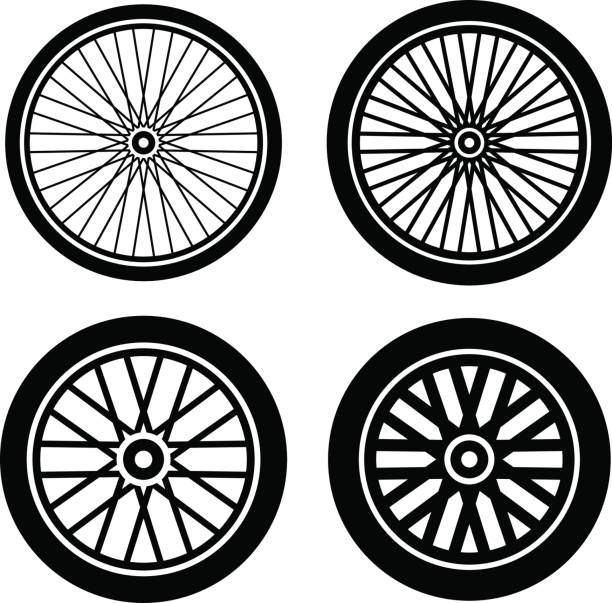Today, wheels are all around us. They can be found in prominent places, such as on cars, trucks, and airplanes, but they can also be hidden within everything, from computer hard drives and clothes washers to electric toothbrushes and dishwashers. Six thousand years ago, there were no wheels. From a simple turntable that was used to mold clay pots, the wheel has become a key component of hundreds of important inventions. This is due to its ability to capture the energy and transform it. Let’s have a closer look.
Why do we need wheels
Modern times assume that roads must exist for wheels to travel. Because there weren’t any smooth tracks, wheels were first used to transport people on carts. People used sleds to drag loads behind horses or dogs before carts were invented. Before wheels were invented, sleds were a great way to move heavy loads. However, friction slows them down. This problem can be solved by frames, which allow a load to be part dragged and partly transported. It is believed that the A-shaped dragging frame, also known as a travois, was invented thousands of years ago. Native Americans used it until the 19th Century. Even with the assistance of animals, friction between the ground and the frame made it difficult to move.
How do wheels work
It is much easier to drag a load on wheels than it is to drag it on the ground.
The wheels reduce friction. Instead of sliding on the ground, wheels dig in and turn around axles, which are sturdy rods. This means that the only friction animals need to overcome is at the intersection of wheel and axle – between the relatively smooth inner surface and the equally smooth outer surfaces of the axles they rotate.
The wheels provide leverage. In other words, they can be used as force multipliers or simple machines. It is easier to push a cart with larger wheels because the greater-diameter wheels act like larger levers. This multiplies the pulling force and makes it easier for the wheels to turn around the axles.
Let’s take a closer look at each of these items.
Shifting friction to an axle
Because both surfaces are fairly rough, friction occurs when you push a box onto the ground.
The resistance is much lower when you load the same box onto a four-wheeled cart. Because the box is no longer required to slide on the ground, some of the friction is eliminated. But wheels won’t completely eliminate friction, contrary to what some people believe. The friction between the four wheels on the ground must exist, or they would slide down (like a pusher on ice). The friction between the wheels and the ground allows the wheel to rotate.
Because there is no friction between the wheels and the axles, carts are much easier to push. The relatively smooth inner surfaces of the wheels spin and slide around the outsides of the axles as you push the cart. Smooth is the keyword. Wheels reduce friction by being able to slide around their axles more easily than objects can on rough ground. If the ground was as smooth as ice, wheels, and axles wouldn’t be necessary. We could simply slip and slide all over it! Ball bearings, small spherical balls made from hard metal and often greased with oil or other greases, can be used to separate wheels and axles. They reduce friction by rolling in the space between the surfaces. The friction between the two surfaces is much lower than if the box was pushed straight down the ground. This is why the cart is so much easier to maneuver.
Leveraging
The wheels on carts also work in another way: they act like levers. This is made even clearer when you see the wheel on the ship.
This is how you can turn the wheel outside. The axle at its center will spin more slowly and with more force if you do this. A large steering wheel makes it easier for a seaman to turn the ship’s rudder than a smaller one. It’s easy to understand how this wheel works if you think of each spoke as a lever. Why is the wheel not solid? The weight of a wheel with thick spokes is significantly lower than a wheel of the same dimensions.
What about the wheels of a cart? Cartwheels have a rim that turns at a greater distance from the axle. This means that if you push a cart from behind or pull it from the front, the force is concentrated at the axle rather than at its rim. It is a good idea to have big wheels on your cart. They give you more leverage and magnify your pushing power, which helps you overcome friction at the axles.
The force that you apply to the wheel (red Arrow) multiplies to create a greater force at the axle. (blue Arrow) Because the wheel’s radius acts like a lever, the bigger the wheel will have, the greater effect. You get more leverage the larger the wheel is.
Instead of turning the wheel in the middle, it will work in the opposite direction. The wheel’s rim will now go further and faster. This is how you can increase your speed by using a larger wheel. The leverage is reversed. You get less force at your rim, but you still have more speed. You can’t increase the force or speed simultaneously, just like with gears. You can’t increase either one or the other. Otherwise, you would be using a wheel for energy production from thin air. This is contrary to a fundamental law of physics known as the conservation and energy.

